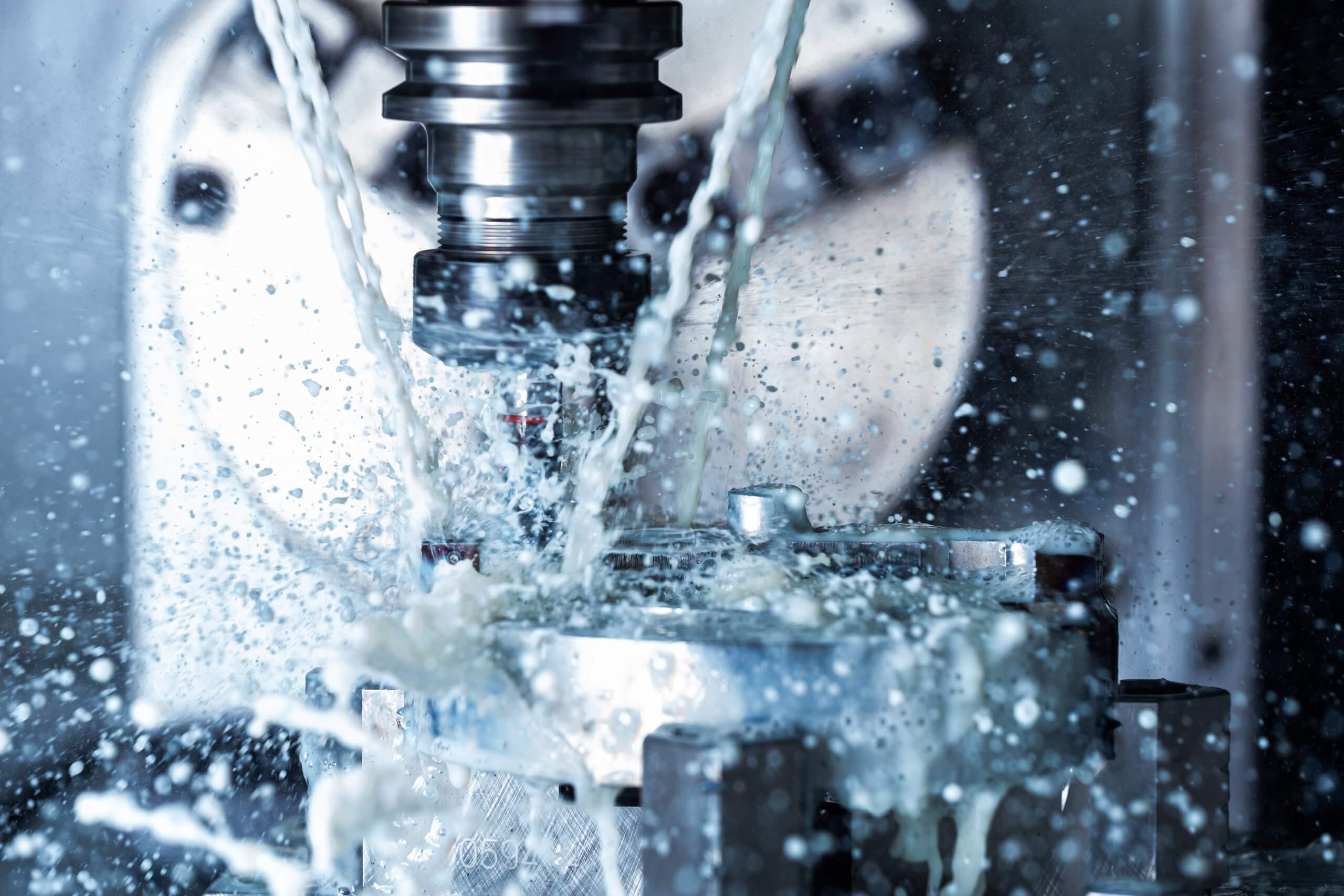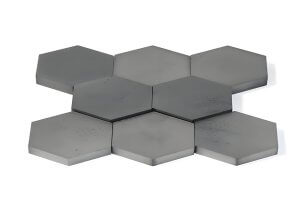Mechanical parts are indispensable components in various machines and equipment. To ensure these parts operate efficiently under different working conditions, it is essential to understand the common materials used for mechanical parts and their processability. This chapter provides a detailed introduction to the commonly used materials for mechanical parts, their selection, heat treatment processes, and structural processability.
Common Materials for Mechanical Parts
Steel
Steel is the most widely used material in mechanical parts. It can be categorized into carbon structural steel, quality carbon structural steel, low alloy high strength steel, and alloy structural steel based on its composition and properties.
Carbon Structural Steel
| Application | Grade | Elongation δ% | Yield Strength σs (MPa) | Tensile Strength σb (MPa) |
|---|---|---|---|---|
| Metal structures, bolts, nuts, etc. | Q195 | 33 | 195 | 315-430 |
| Welded parts, bolts, nuts, etc. | Q235 | 26 | 235 | 375-500 |
Quality Carbon Structural Steel
| Application | Grade | Elongation δ% | Yield Strength σs (MPa) | Tensile Strength σb (MPa) |
|---|---|---|---|---|
| Cold-stamped parts, connectors, etc. | 20 | 31 | 245 | 410 |
| Quenched and tempered parts | 45 | 21 | 335 | 570 |
Low Alloy High Strength Steel
| Application | Grade | Elongation δ% | Yield Strength σs (MPa) | Tensile Strength σb (MPa) |
|---|---|---|---|---|
| Large bridges, high-pressure vessels, etc. | Q345 | 21 | 345 | 470-630 |
| Medium-temperature high-pressure vessels, etc. | Q460 | 17 | 460 | 550-720 |
Alloy Structural Steel
| Application | Grade | Elongation δ% | Yield Strength σs (MPa) | Tensile Strength σb (MPa) |
|---|---|---|---|---|
| Important gears, crankshafts, etc. | 40Cr | 9 | 785 | 980 |
| Carburized parts such as gears | 20Cr | 10 | 540 | 835 |
Cast Steel
Cast steel is widely used for manufacturing large bridges, ships, and high-pressure vessels. Common grades include ZG310-570, ZG340-640, etc. These materials have high strength and good weldability.
Cast Iron
Cast iron is primarily used for parts that bear moderate loads, such as machine tool beds, slides, and worktables. Common grades include HT200, HT250, etc. These materials have good casting properties and wear resistance.
Copper Alloy
Copper alloys, such as brass and bronze, are often used to make bearings, bushings, springs, and other important mechanical parts. Common grades include H62, ZCuSn10P1, etc., which have excellent electrical conductivity and wear resistance.
Aluminum and Aluminum Alloy
Aluminum and aluminum alloys are commonly used to manufacture complex-shaped, lightweight parts. Common grades include ZL101, 7A04, etc., which have good casting properties and corrosion resistance.
Engineering Plastics
Engineering plastics, such as nylon and PTFE, are used to make wear-resistant parts and electrical insulation parts. Common grades include Nylon 66 and PTFE, which have excellent mechanical properties and chemical resistance.
Principles of Material Selection
When selecting materials for mechanical parts, comprehensive consideration of material performance, processability, and economy is necessary.
Performance
Material selection should be based on factors such as the load, working conditions, size, and importance of the part. For instance, high-strength and wear-resistant parts can be made from alloy steel, while corrosion-resistant parts can be made from stainless steel.
Processability
The processability of materials is also a critical factor. The structural characteristics of the part and the suitable processing methods for different materials should be considered. For example, cast iron is suitable for box-type parts, while structural steel or forgings are suitable for shaft-type parts.
Economy
To reduce the total cost, materials with lower costs should be selected while ensuring the performance requirements. However, sometimes using more expensive but higher-performance materials can be more economical in the long run due to reduced weight, increased lifespan, and lower maintenance costs.
Material Selection for Common Mechanical Parts
Shaft Parts
Shaft parts are primarily used to support rotating parts and transmit power or motion. Common materials include structural steels such as 45 and 40Cr. In special cases, stainless steel or non-ferrous metals may be used.
Gear Parts
Gears are widely used in various mechanical devices. They are typically made of medium carbon steel or alloy steel, which undergo heat treatment to achieve high hardness and wear resistance.
Spring Parts
Springs are used in various mechanical and instrument applications to absorb shock, store energy, and control motion. They are generally made from medium carbon steel or alloy steel, such as 65Mn and 60Si2Mn.
Box Parts
Box parts are generally complex in shape and large in volume. They are commonly made from cast iron or cast steel. For simple-shaped, small-batch production, low carbon steel welded parts may be used.
Tool Materials
Tools used for cutting various metals and non-metals require high hardness. Common tool materials include non-alloy tool steel, alloy tool steel, high-speed steel, and hard alloys.
Gauge Materials
Gauges used to measure the dimensions of workpieces need to be wear-resistant and have a certain degree of toughness. Common materials include low-alloy tool steel and chromium-bearing steel, such as CrWMn and GCr15.
Heat Treatment of Materials and Applications
Heat treatment involves heating, holding, and cooling materials to alter their internal structure and improve their mechanical properties. Common heat treatment processes include annealing, normalizing, quenching, and tempering.
Annealing
Annealing involves heating steel to a temperature above the critical temperature, followed by slow cooling in the furnace. It aims to reduce hardness, increase plasticity, refine the crystalline structure, and improve machining performance.
Normalizing
Normalizing is similar to annealing but involves cooling in the air, resulting in finer crystalline structures and improved comprehensive mechanical properties.
Quenching
Quenching involves heating steel to a temperature above the critical temperature, followed by rapid cooling in water or oil. It significantly increases hardness and wear resistance but also increases brittleness and internal stress.
Tempering
Tempering involves reheating quenched steel to a certain temperature below the critical temperature, followed by cooling. Depending on the tempering temperature, it can be classified as low, medium, or high-temperature tempering.
Chemical Heat Treatment
Chemical heat treatment, such as carburizing, nitriding, and cyaniding, alters the chemical composition of the material surface to improve surface hardness and wear resistance.
Structural Processability of Mechanical Parts
When designing mechanical parts, it is essential to consider their manufacturability and assembly feasibility.
Blank Manufacturing
Blanks are preliminary workpieces obtained by casting, forging, welding, etc. The design should simplify the manufacturing process to reduce costs.
Machining
Machining includes turning, milling, grinding, etc. The design should consider the difficulty of machining, aiming to reduce unnecessary complex structures to improve efficiency and precision.
Heat Treatment
Heat treatment significantly impacts the final properties of the parts. The design should consider the feasibility of heat treatment to avoid deformation or cracking.
Assembly and Positioning
The design should ensure easy assembly and reliable positioning to enhance production efficiency and assembly quality.
Standardization in Mechanical Design
To ensure product quality, reduce design workload, facilitate part interchangeability, and organize specialized mass production, mechanical design should adopt standardized parts and design methods. National and industry standards should be followed in design.
| No. | Standard Name | Standard Number |
|---|---|---|
| 1 | Guide for Selection of Preferred Numbers and Preferred Number Rounding Series | GB/T 19764-2005 |
| 2 | Guide for Reliability Evaluation of Electromechanical Products | JB/T 7518-1994 |
| 3 | General Rules for Reliability Test of Mechanical Products | JB/T 7559-1994 |
| 4 | Standard Dimensions | GB/T 2822-2005 |
| 5 | Mechanical Drawing Surface Roughness Symbols, Codes and Annotation Methods | GB/T 131-1993 |
| 6 | Surface Roughness Parameters and Values | GB/T 1031-1995 |
| 7 | Tolerances for Shape and Position without Indicated Tolerances | GB/T 1184-1996 |
| 8 | Center Hole | GB/T 145-2001 |
| 9 | Rounding and Chamfering of Parts | GB/T 6403.4-1986 |
| 10 | Overrun Grooves of Grinding Wheels | GB/T 6403.5-1986 |
| 11 | Involute Cylindrical Gear Modules | GB/T 1357-1987 |
| 12 | Arc Cylindrical Gear Modules | GB/T 1840-1989 |
| 13 | Modules and Diameters of Cylindrical Worms | GB/T 10088-1988 |
| 14 | Accuracy of Cylindrical Worms and Worm Wheels | GB/T 10089-1988 |
Other Articles You Might Enjoy
- Reaming Process for Stainless Steel Parts
The reaming process for stainless steel parts involves the following steps: Tool Geometry Design Most reaming of stainless steel materials uses carbide reamers. The structure and geometric parameters of these…
- What should be noted about materials when machining parts with CNC?
When machining parts with CNC, not all materials can be precisely processed. Some materials are too hard and may damage the CNC machining tools, making them unsuitable for precision machining…
- Heat Treatment of Mechanical Part Materials and Their Applications
Introduction to Steel Heat Treatment Steel heat treatment involves heating, holding, and cooling the steel in solid-state to change its internal structure, thereby improving its mechanical and process properties. The…
- Types of Stainless Steel and Stainless Steel Grades
Stainless steel, renowned for its corrosion resistance, is a vital material in various industries, from construction to culinary tools. This article delves into the types of stainless steel and their…
- CNC Machining Materials Deep Dive: Acrylic vs. Polycarbonate for Transparent Parts
CNC Machining Materials Deep Dive: Acrylic vs. Polycarbonate for Transparent Parts Computer Numerical Control (CNC) machining is a production process that involves the use of computers to control machine tools,…
- What are the common challenges in the process of precision CNC machining bronze parts?
What Materials Considerations Are Crucial for CNC Machining Bronze? Bronze alloys vary widely in their composition and properties, impacting their machinability and the quality of the final product. Key considerations…







 Afrikaans
Afrikaans Albanian
Albanian Amharic
Amharic Arabic
Arabic Armenian
Armenian Azerbaijani
Azerbaijani Basque
Basque Belarusian
Belarusian Bengali
Bengali Bosnian
Bosnian Bulgarian
Bulgarian Catalan
Catalan Cebuano
Cebuano Chichewa
Chichewa Chinese (Simplified)
Chinese (Simplified) Chinese (Traditional)
Chinese (Traditional) Corsican
Corsican Croatian
Croatian Czech
Czech Danish
Danish Dutch
Dutch English
English Esperanto
Esperanto Estonian
Estonian Filipino
Filipino Finnish
Finnish French
French Frisian
Frisian Galician
Galician Georgian
Georgian German
German Greek
Greek Gujarati
Gujarati Haitian Creole
Haitian Creole Hausa
Hausa Hawaiian
Hawaiian Hebrew
Hebrew Hindi
Hindi Hmong
Hmong Hungarian
Hungarian Icelandic
Icelandic Igbo
Igbo Indonesian
Indonesian Irish
Irish Italian
Italian Japanese
Japanese Javanese
Javanese Kannada
Kannada Kazakh
Kazakh Khmer
Khmer Korean
Korean Kurdish (Kurmanji)
Kurdish (Kurmanji) Kyrgyz
Kyrgyz Lao
Lao Latin
Latin Latvian
Latvian Lithuanian
Lithuanian Luxembourgish
Luxembourgish Macedonian
Macedonian Malagasy
Malagasy Malay
Malay Malayalam
Malayalam Maltese
Maltese Maori
Maori Marathi
Marathi Mongolian
Mongolian Myanmar (Burmese)
Myanmar (Burmese) Nepali
Nepali Norwegian
Norwegian Pashto
Pashto Persian
Persian Polish
Polish Portuguese
Portuguese Punjabi
Punjabi Romanian
Romanian Russian
Russian Samoan
Samoan Scottish Gaelic
Scottish Gaelic Serbian
Serbian Sesotho
Sesotho Shona
Shona Sindhi
Sindhi Sinhala
Sinhala Slovak
Slovak Slovenian
Slovenian Somali
Somali Spanish
Spanish Sundanese
Sundanese Swahili
Swahili Swedish
Swedish Tajik
Tajik Tamil
Tamil Telugu
Telugu Thai
Thai Turkish
Turkish Ukrainian
Ukrainian Urdu
Urdu Uzbek
Uzbek Vietnamese
Vietnamese Welsh
Welsh Xhosa
Xhosa Yiddish
Yiddish Yoruba
Yoruba Zulu
Zulu